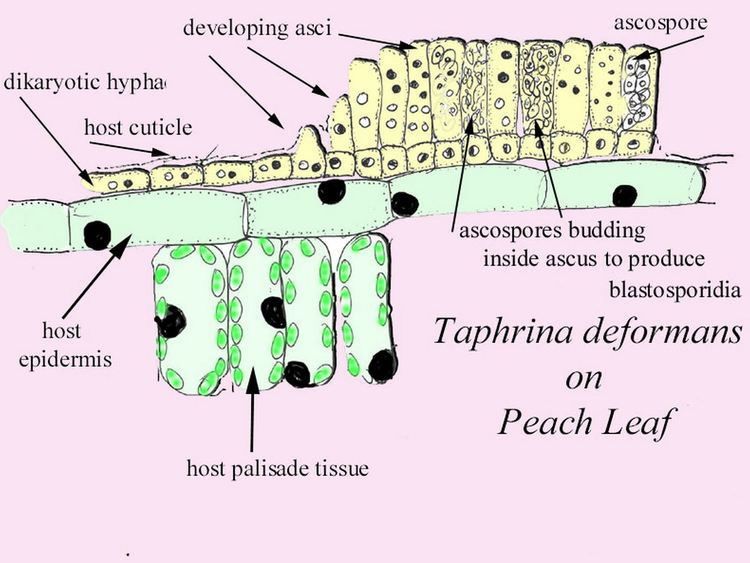Genus Taphrina Rank Species | ||
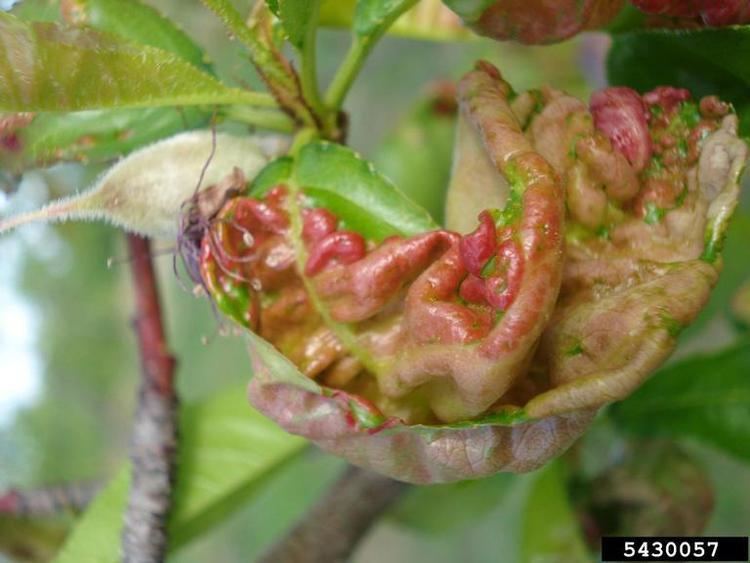 | ||
Similar Taphrina, Stigmina carpophila, Taphrina pruni, Monilinia, Venturia | ||
Taphrina deformans
Taphrina deformans is a fungus and plant pathogen, and a causal agent[s] of peach leaf curl.
Contents
taphrina deformans berk tul
Life cycle
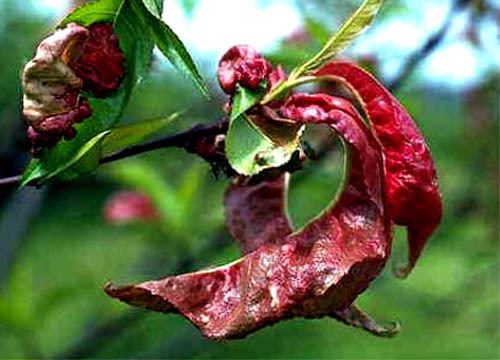
Taphrina deformans infects species of the genus Prunus (including P. amygdalus (almond) and P. persica (peach)). It has been observed that this fungus also infects the fruits of some South American trees like Ocotea puberula, Nectandra megapotamica and other Lauraceae species. Infected leaves develop a whitish bloom as the infection progresses. This bloom consists of asci that break through the cuticle of the leaf by way of lysis. One ascus contains eight ascospores that create conidia, which are ejected in early summer and moved by rain and wind. This fungus is believed to survive the winter by staying on the surface of the new host plant, such as on bark or buds. In the spring, new buds are infected by the conidia as the leaves emerge from the buds. The disease does not occur every year, as it requires a minimum of 3mm of rainfall followed by at least 12 days during which the developing conidia remain damp and at temperatures below 19°C. The fungus has higher infection rates following cooler, damper winters.
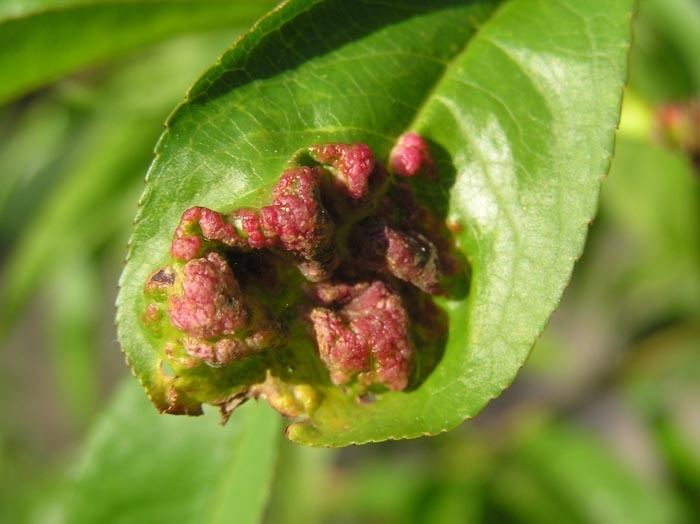
Taphrina deformans hyphae growing in intercellular spaces secrete polysaccharide-degrading enzymes, such as cellulase, causing partial dissolution of the host cell wall. This process also results in changes in the plasma membrane. T. deformans also produces the auxin indole-3-acetic acid from L-tryptophan via indole-3-pyruvic acid and indole-3-acetaldehyde. This process is thought to be responsible for the hyperplastic effect of the infection.
Taphrina deformans genome
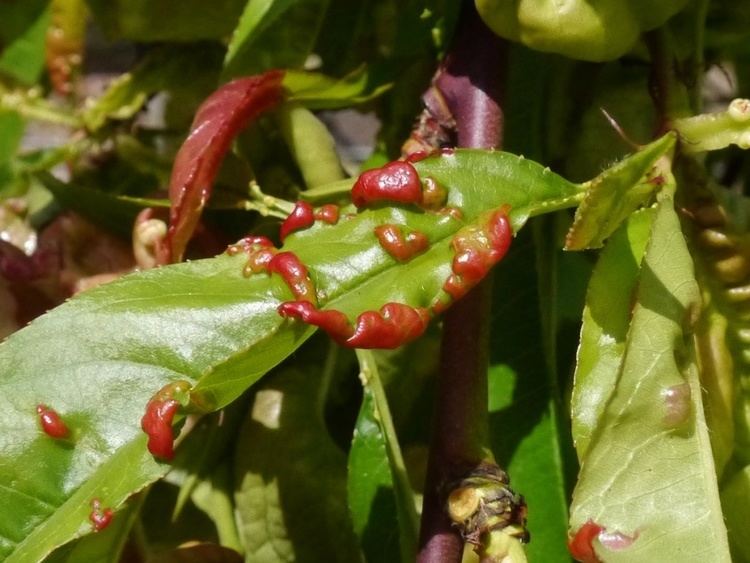
Taphrina deformans genome has been sequenced. . The genome carries characteristic genes that are important for the plant infection process.

